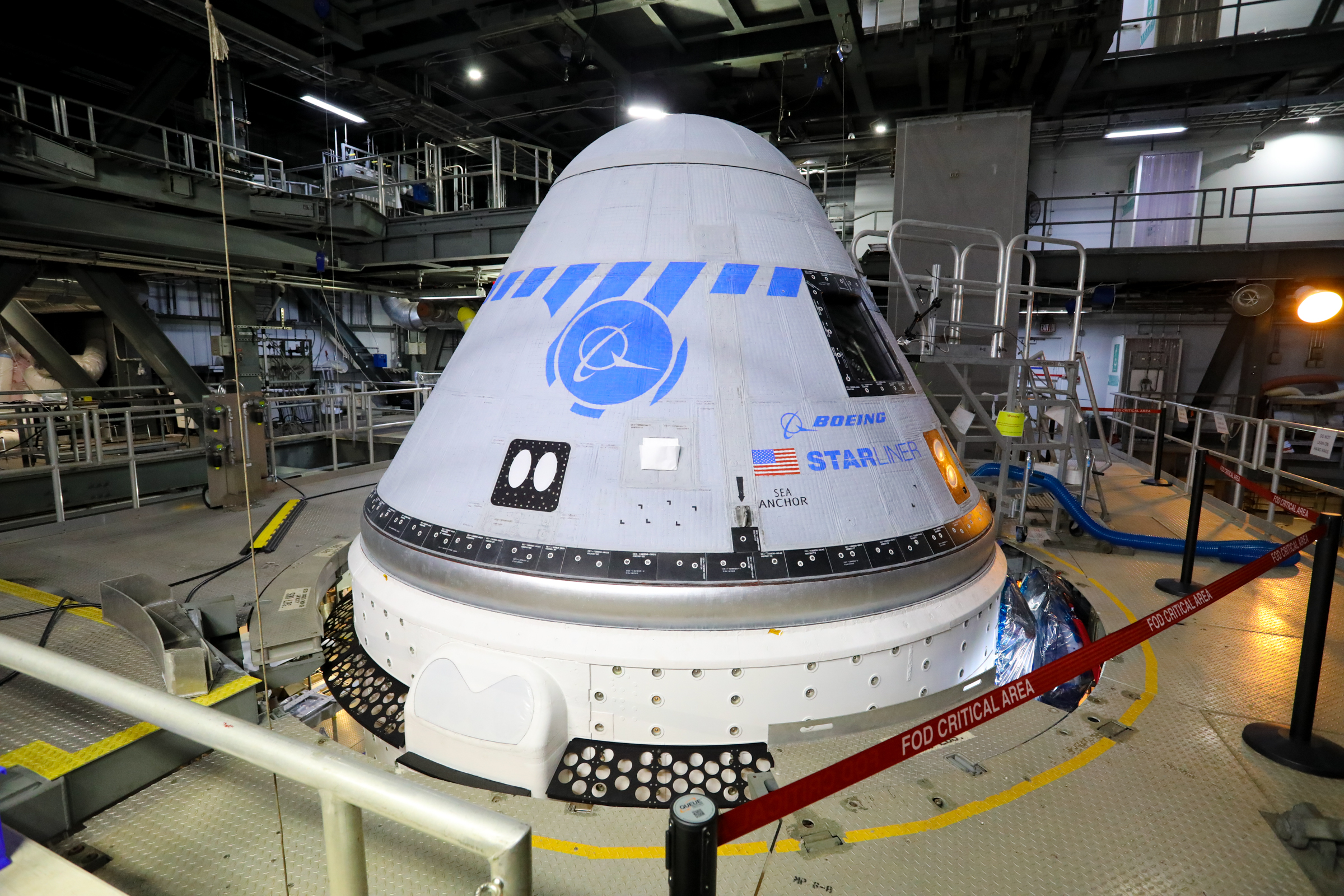
In case you missed it, Boeing’s Starliner has been having a lot of issues. Twenty months after its near-disaster of a first test flight, the spacecraft was finally ready for another attempt, but it keeps running into issues that cause further delays.
The latest delay is due to a series of thirteen stuck valves that control the flow of oxidizer — in this case, nitrogen tetroxide — from the vehicle’s propellant tanks to the reaction control system thrusters that orient it in space. The Starliner has 64 valves in its reaction control system: 24 for the oxidizer nitrogen tetroxide, 24 for the fuel unsymmetrical dimethylhydrazine, and sixteen valves for the helium gas that is used to pressurize both the propellant and the oxidizer. There are separate sets of nitrogen tetroxide and unsymmetrical dimethylhydrazine valves for the much larger launch escape engines. Only the oxidizer valves in the reaction control system were affected.
Boeing attempted to free the valves while the spacecraft was still stacked atop its Atlas V rocket at the launch facility and was able to free most of them, but as of last week, four remained stuck. Boeing used “electrical and thermal techniques” to open the valves. The company made an announcement at a press conference on August 13 that they would unstack the Starliner from its rocket and take it for further troubleshooting at its factory on Kennedy Space Center grounds. In order to access the remaining stuck valves, the capsule will be separated from its service module.
Boeing thinks the root cause of the valve sticking is atmospheric moisture mixing with an oxidizer that leaked through a seal in the valves. When moisture mixes with nitrogen tetroxide, it creates nitric acid which is what corroded the valves and stopped them from responding to commands.
Even if the valve issue is resolved quickly, there are a lot of factors that could delay Starliner’s next opportunity for a second orbital test flight. The most significant factor is NASA’s upcoming Lucy mission. Like OFT-2, Lucy needs SLC-41, the east coast Atlas V pad, for its 24-day launch window out to the Trojan asteroids, which opens on October 16. If Lucy misses this window, it will have to wait until next year to launch, and if that doesn’t happen, the next opportunity is another two years later, in 2024. So, Lucy gets the pad for as long as it needs this fall, and everyone else has to wait.
United Launch Alliance (ULA) needs seventeen days on either side of a launch period to switch between missions, according to CEO Tory Bruno, which pushes the earliest that OFT-2 can launch to the end of October, even if Lucy launches on the first day of its launch window. ULA will potentially reduce this time by using the Atlas V first stage originally stacked for OFT-2 for the Lucy mission. The second stage for OFT-2 cannot be used for Lucy as it is a special configuration for Starliner.
Meanwhile, the International Space Station (ISS) that is Starliner’s destination has a packed schedule of visiting vehicles that also restricts when it can launch.
CRS-23, the next Cargo Dragon mission to the ISS, is scheduled to launch at the end of August. CRS-23 will spend a month at the station, occupying one of the two IDA ports the Starliner needs. The other port is occupied by SpaceX Crew-2, currently set to return in November. SpaceX Crew-3 will launch after CRS-23 in late October, providing for a direct handover before Crew-2 departs. Operational crew missions take priority over an uncrewed test flight, which will delay OFT-2 to December or even early 2022.
Hopefully, this will give Boeing the time they need to fix all the issues with the OFT-2 spacecraft.
More Information
Boeing Works to Open Starliner Valves, Determine Cause of Valve Issues (Boeing)
Starliner Returning to Factory to Resolve Valve Issue (Boeing)
Boeing to Build Private Space Taxis in Old NASA Shuttle Hangar (Space.com)
NASA Announces Date for SpaceX’s 23rd Cargo Resupply Mission (NASA)




 Join the Crew!
Join the Crew!
 Escape Velocity Space News
Escape Velocity Space News
0 Comments